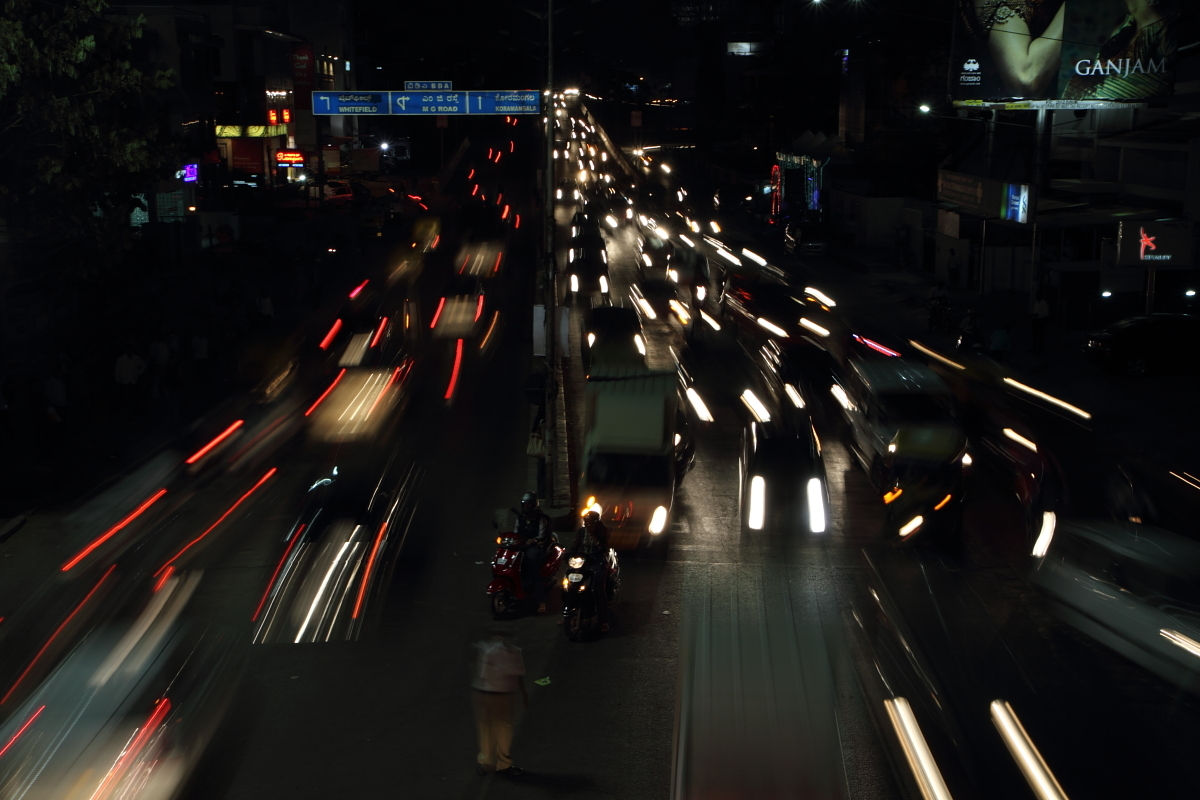
Highway to HELL!
Solutions




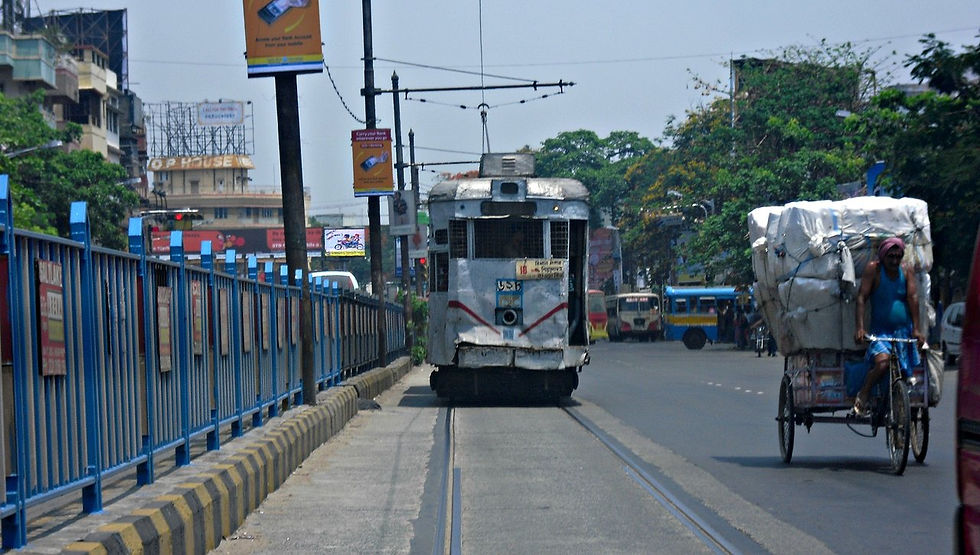
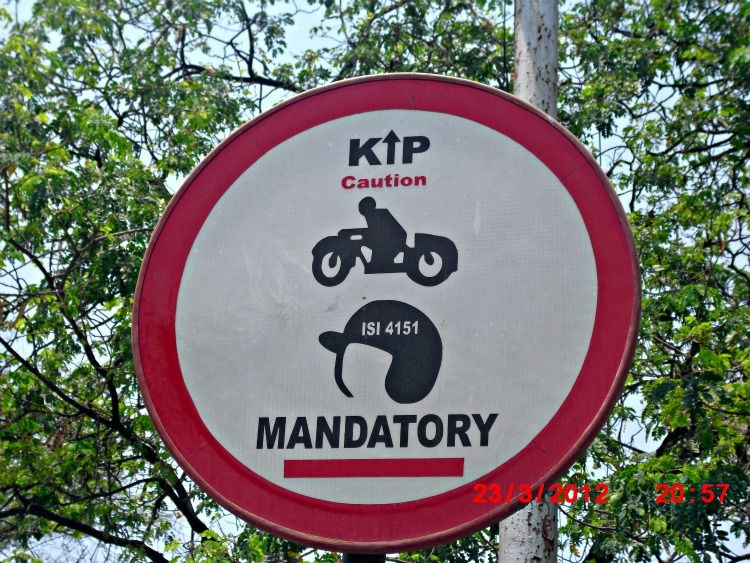
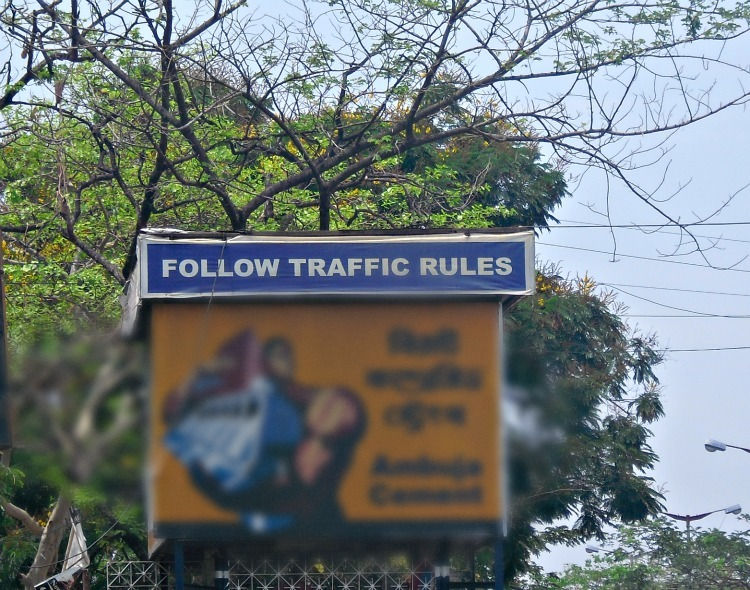







Practicing What We Preach
We interviewed three teachers from our school, who have witnessed traffic rules being broken. Here, they air their views on the matter, and tell us what they could do as teachers to curb the problem.
To read the transcript of this video, click below.
Our campaign:
After analyzing the survey, we understood that a large percentage of people thought that campaigns would help in curbing the number of road accidents. So we decided to make people aware about the basic traffic rules and the implications of breaking traffic rules.
What did we do?
We made banners and pamphlets stating some basic traffic rules and distributed these on main junctions. We talked to the people and explained that the consequences of breaking traffic rules could be dire. Human life would also be lost by this. We requested people to drive more carefully and to follow traffic rules such as wearing helmets, fastening seatbelts, driving within speed limits, following lane discipline, not jumping red lights, not talking on the mobile phone while driving, and switching on headlights while driving at night. We also informed them about Bangalore Traffic Police’s traffic helpline (Phone 103). We told the people to be aware and alert at all times because anything could happen.We also requested them to help the person who suffered in an accident and rush him/her to the hospital if they ever see an accident (hopefully, there won't be any).
Reactions of the people:
At first, we were very hesitant about getting so much attention but after a while we started enjoying the experience. We turned quite a few heads and some people actually stopped and talked to us. Some people thought that this was not the best way to stop accidents but others thought that the message must be told over and over again to curb the rate of accidents. One gentleman read the pamphlet out loud in the local language, Kannada, to his driver and other drivers who were sitting around. This made us realize that we must also distribute pamphlets in the local languages so that the drivers and the autorickshaw (three-wheelers) drivers would understand the messages. Some of the people were very eager to know about our project and the website and we also shared our Facebook, Twitter and Google plus pages with them. One gentleman who was riding a two wheeler without a helmet stopped and requested us to delete his picture because he did not want anyone to catch him for not wearing the helmet. He also apologized to us for not wearing his helmet and promised that he would wear it from now on. Before we started our campaign, we talked to our school bus drivers and they admitted that they had seen many people break traffic rules. We made them promise that they would not break rules after telling them that they could put many children’s lives in danger.
We thoroughly enjoyed the campaign and decided that we would do it again.
Limitations of our solution:
We were able to only reach out to a small number of people and so our solution may not have worked completely. None of us knew how to speak Kannada well and so we used mainly Hindi and English in our campaign. Also, most people might not have taken us very seriously because we were just children. We were not able to visit many places because of lack of transport and lack of time.
Therefore, to actually create awareness, the government must launch campaigns in the local languages and national language. Everyone must be informed about the important traffic rules and the consequences of breaking these rules. The Government must raise awareness by means of television advertisements, radio jingles, seminars, exhibitions, posters, handbills etc. Even the people in villages must be informed about these so that these problems won't be faced in future by villagers. According to the report on ‘Road Accidents in India, 2004’ of the Government of India, during the year 2010-2011, there was a provision of Rs. 30 crores for this activity. Government should also raise awareness about the actions to be taken after accidents take place. This should include telephone numbers of ambulances, hospitals, police, etc.
We researched other ways of preventing road accidents. They are:
Technological solutions
Advances in semiconductor technology, as represented by the famous Moore’s law continue to revolutionalize the electronics industry. The availability of compute capacity, storage capacity and network bandwidth capacity per unit cost continues to grow exponentially, and this has opened up many new opportunities to impact our lives – helping make the world a greener, smarter and safer place. The information and communication technologies operating over advanced semiconductor devices (popularly called VLSI Chips) are beginning to revolutionalize traffic management, and offer solutions to many of the problems we have discussed.
Key traffic junctions can be fitted with cameras which require low power because they can be operated on batteries charged with solar energy. These cameras can operate in conjunction with traffic light controls, to detect traffic violations, identify the vehicles and locate the owner details using techniques such as optical character recognition which must be checked constantly by authorities.
The Bangalore Traffic Information System (http://www.btis.in/) shows live traffic updates through cameras. These cameras have been fitted all around Bangalore. This can help the police in detecting violators.
According to Wikipedia, the Advanced Driver Assistance Systems (called ADAS) help the driver in driving safely. It is designed with a ‘human machine interface’ and is mean to increase car safety and road safety. Some examples of these listed on Wikipedia (http://en.wikipedia.org/wiki/Advanced_driver_assistance_systems) include:
- In-vehicle navigation system
- Lane change assistance
- Collision avoidance system (Precrash system)
- Intelligent speed adaptation or intelligent speed advice (ISA)
- Night Vision
- Pedestrian protection system
- Traffic sign recognition
- Blind spot detection
- Driver drowsiness detection
- Hill descent control
Some of these may not be very useful in India. Lane Change Assistance would not work since clear lanes are not present on Indian roads. Traffic sign recognition systems will not be very useful since in India, traffic signs are not put on the road most of the times.
According to the Government of India report “Road Accidents in India 2009” (2011, pg 37), safer vehicles should be manufactured by improving ‘crash worthiness and safety of occupants’ by putting objects such as ‘safety belts, air bags, laminated windshields, improving breaking conditions and installing suitable lights to reduce glare’.
In December 2011, the Government of India, Ministry of Road Transport and Highway published a Synthesis Report of four Working Groups on Education, Enforcement, Engineering and Emergency Care constituted under the National Road Safety Council (http://morth.nic.in/writereaddata/linkimages/Synthesis%20Report%20of%20four%20Working%20Groups%20on%20road%20safety%20-2916469697.pdf). The report said that people should safety inspection for their vehicles and this should include both visual and automated equipment tests (page 40).
Legal Measures
According to the above-mentioned Synthesis Report, suggestions for amendments in the Motorised Vehicle Act, 1988 are higher fines and compensation with regard to injury, death, hit-and-run cases, etc. The report also said that there should be stricter requirement for issue of driving license (page 8).
Most of the times, we found that the laws are not enforced. Some people are also driving without license. For this problem to get solved, regular checks must be conducted.
Others
First and foremost, traffic rules must be followed by all. Rash driving, zig-zag driving, bike racing, etc. must be stopped.
Drivers must NOT TALK ON MOBILE PHONES WHILE RIDING OR DRIVING. Great care must be taken during the construction of roads.
There must be proper lighting on all the roads. However, light requires massive amount of energy which can be operated using renewable sources of energy. However, if this is not financially possible, neon strips can be attatched on black or dark coloured cars. Neon strips must be attached on signboards too.
Police must wear jackets with neon strips.
There must be seperate lanes for emergency vehicles, pedestrians, cyclists and heavy vehicles. There must be strong dividers that cannot be moved easily.
There must be big bold instructions in local languages, national language and in English. In driving schools, drivers must be made aware of the various signs and their meanings.
Even car agencies should instruct the drivers not to break rules.
Traffic signals should be placed at proper intervals and zebra crossing and pedestrian signals must also be clearly shown.
There must be well marked speed-breakers at proper places on main roads.
People should use public transport so that the chaos on the streets is reduced. In some cities in India autorickshaws are shared by people whereas in many they are not.
License must be issued only after the driver has signed that he will not break rules, not drink and drive, won't use his mobile phone while driving and has read or has been informed about all the rules. He must follow lane discipline, not jump signals, etc. too.
Potholes must be covered all around the country.
Less number of hoardings must be placed on roads.
Pedestrians must be given much more importance.
Beggars and vendors must also be careful and people must take great care not to run over them. These beggers and vendors too must be made aware of the possible consequences through awareness campaigns.
Often, people do not use footbridges as they have to climb many steps. There must be heavy duty lifts. There must be a lift reserved for senior citizens, pregnant women, women with small babies, etc.
We noticed in some places, alarms were sounded when all the cars had to stop and pedestrians were allowed to cross. We saw this near a hospital. We felt, there must be a more pleasant sound played. However this is a good system and must be encouraged.
"Men at Work" signs must be big, bold and written in dark black letters. At night these boards must be provided with neon strips.

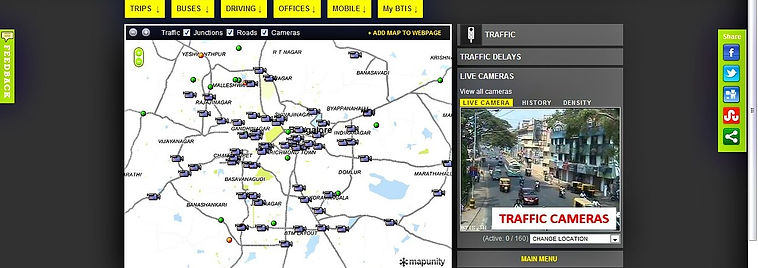
Traffic Rules in India
(extracted from- http://www.bangaloretrafficpolice.gov.in/index.php?option=com_content&view=article&id=82&btp=82)
Rules of the Road Regulations, 1989
1. KEEP LEFT
The driver of a motor vehicle shall drive the vehicle as close to the left hand side of the road as may be expedient and shall allow all traffic which is proceeding in the direction to pass on his right hand side.
2. TURNING TO LEFT AND RIGHT
The driver of a motor vehicle shall -
• when turning to left, drive as close as may be to the left-hand side of the road from which he is making the turn and of the road which he is entering
• when turning to the right draw as near as may be to the centre of the road along which he is travelling and arrive as near as may be at the left-hand side of the road which the driver is entering
3. PASSING TO THE RIGHT
Except as provided in regulation 5, the driver of a motor vehicles shall pass to the right of all traffic proceeding in the same direction as himself.
4. PASSING TO THE LEFT
The driver of a motor vehicle may pass to the left of a vehicle the driver of which having inducted an intention to turn to the right has drawn to the centre to the Road and may pass on either side.
5. OVERTAKING PROHIBITED IN CERTAIN CASES
The driver of a motor vehicle shall not pass a vehicle travelling in the same direction as himself.
6. OVERTAKING NOT TO BE OBSTRUCTED
The drive of a motor vehicle shall not, when being overtaken or being passed by another vehicle, increase speed or do anything in any way to prevent the other vehicle from passing him.
7. CAUTION AT ROAD JUNCTION
The drive of a motor vehicle shall slow down when approaching such intersection, junction at which traffic is not being regulated, if the road entered is a main road designated as such, give way to the vehicles proceeding along that road, and in any other case give way to all traffic approaching the intersection on his right hand.
8. GIVING WAY TO TRAFFIC AT ROAD JUNCTION
The driver of a motor vehicle shall, on entering a road intersection, at which traffic is not being regulated, if the road entered is a main road designated as such, give way to the vehicles proceeding along that road, and in any other case give way to all traffic approaching the intersection on his right hand.
9. FIRE SERVICE VEHICLES AND AMBULANCE TO BE GIVEN FREE PASSAGE
Every driver shall on the approach of a fire service vehicle or of an ambulance allow free passage by drawing to the side of the road.
10. RIGHT TO WAY
The pedestrians have the right of way at uncontrolled pedestrian crossings. When any road is provided with footpath or cycle tracks specially for other traffic, except with permission of a police officer in uniform, a driver shall not drive on such footpath or track.
11. TAKING "U" TURN
No driver shall take a "U" turn where "U" turn is specially prohibited and on busy traffic road. If a "U" turn is allowed the driver shall slow signal by hand as for a right turn, watch in the rear view mirror and turn when safe to do so.
12. SIGNALS TO BE GIVEN BY DRIVERS
The following signals shall be used by the drivers of all motors vehicles namely.
13. DIRECTION INDICATOR
The signals referred to in regulation 12, may be simplified also by mechanical or electronic devices.
14. PARKING OF THE VEHICLE
Every driver of a motor vehicle parking on any road shall park in such a way that it does not cause or is not likely to cause danger, obstruction or undue inconvenience to other road users and it the manner or parking is indicated by any sign board or markings on the road side, he shall park his vehicle in such manner.
15. VISIBILITY OF LAMPS AND REGISTRATION MARKS
(1) No load or other goods shall be placed on any motor vehicles so as to mask or otherwise interrupt vision of any lamp, registration mark or other mark required to be carried by or exhibited on any motor vehicle by or under Act, unless a duplicate of the lamp or mark so marked or otherwise obscured is exhibited in the manner required by or under the Act for the exhibition of the marked or obscured lamp or mark.
16. ONE WAY TRAFFIC: A DRIVER SHALL NOT
• Drive a motor vehicle on roads declared "ONE WAY" except in the direction specified by sign boards.
• Drive a vehicle in a reverse direction into a road designed "ONE WAY".
17. DRIVING ON CHANNELISED ROADS ( LANE TRAFFIC )
Where any road is marked by lanes for movement of traffic, the driver of a motor vehicle shall drive within the lane and change the lane only after giving proper signal.
18. STOP SIGN ON ROAD SURFACE
When any line is painted on or inlaid into the surface of any road at the approach to the road junction or to a pedestrian crossing or otherwise,no driver shall drive a motor vehicle so that any part thereof projects beyond that line at any time when a signal to stop is being given by a police officer or by means of a traffic control light or by the display of any traffic sign.
19. TOWING
No vehicle other than a mechanically disabled motor vehicle or incompletely assembled motor vehicle, a registered trailer or a side car, shall be drawn or towed by any other motor vehicle, except for purposes of delivery and to the nearest filling station or garage.
20. USE OF HORNS AND SILENCE ZONES
A driver of a vehicle shall not
• Sound the horn needlessly or continuously or more than necessary to ensure safety.
• Sound the horn in silence zones.
21. TRAFFIC SIGN AND TRAFFIC POLICE
A driver of a motor vehicle and every other person using the road shall obey every direction given whether by signal or otherwise a police officer, or by notice, traffic sign or signal fixed or operated.
22. DISTANCE FROM VEHICLES IN FRONT
The driver of a motor vehicle moving behind another vehicle shall keep at a sufficient distance from that other vehicle to avoid collision if the vehicle in front should suddenly slow down or stop.
23. ABRUPT BRAKE
No driver of a vehicle shall apply brake abruptly unless it is necessary to do so for safety reasons.
24. VEHICLES GOING UPHILL TO BE GIVEN PRECEDENCE
On mountain roads and steep roads, the driver of a motor vehicle travelling down hill shall give precedence to a vehicle going uphill wherever the road is not sufficiently wide to allow the vehicle to pass each other freely without danger, and stop the vehicle to the side of the road in order to allow any vehicle proceed in uphill to pass.
25. OBSTRUCTION OF DRIVER
A driver of a motor vehicle shall not allow any person to stand or all or anything to be placed in such manner or position as to hamper his control of the vehicle.
26. SPEED TO BE RESTRICTED
The driver of a motor vehicle shall, when passing or meeting procession or a body of body of troops or police on the march or when passing workmen engaged on road repairs, drive at a speed not exceeding 25 Km an hour.
27. DRIVING OF TRACTORS AND GOOD VEHICLES
A driver when driving a tractor shall not carry or allow any person to be carried on tractor. A drive of goods carriage shall not carry in the drivers cabin more numbers of persons than that is mentioned in the registration certificate and shall not carry passengers for hire or reward.
28. PROJECTION OF LOADS
No person shall drive in any public place any motor vehicle which is loaded in a manner likely to cause danger to any person in such a manner that the load or any part thereof of anything extends laterally beyond the body or to the rear or in height beyond the permissible limit.
29. RESTRICTION TO CARRIAGE OF DANGEROUS SUBSTANCES
Except for the fuel and lubricants necessary for the use of the vehicle, no explosive highly inflammable or otherwise dangerous substance, shall be carried on any public service vehicle.
30. RESTRICTION ON DRIVING BACKWARDS
No driver of a motor vehicle shall cause the vehicle to be driven backward without first satisfying himself that he will not thereby cause danger or undue inconvenience to any person or in any circumstances, for any greater distance or period of time than may be reasonably necessary in order to turn the vehicle round.
31. PRODUCTION OF DOCUMENTS
A person driving a vehicle shall always carry with him his driving license,certificate of registration, certificates of taxation and certificate of insurance of the vehicle and in case of
• transport vehicle the permit and fitness certificate,also.
• shall on demand by police officer in uniform or an officer of the Motor Vehicles Department in uniform or any other officer authorised by the Government, produce the documents for inspection.





